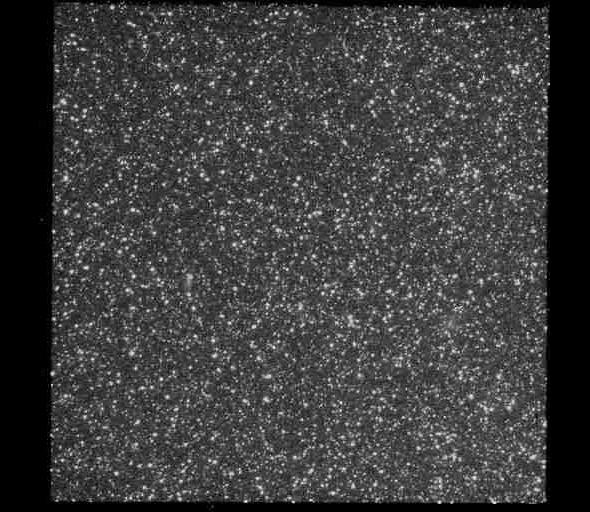Earlier this year, the folks at Hubble released a jaw-dropping and massive image of the Andromeda galaxy that took me by surprise. What I mean is, when I first looked at the picture I saw small(ish) versions, and they looked noisy, low quality.
Then I clicked on the bigger version, and literally gasped when I realized that what I thought was noise was actually a hundred million stars, jammed so closely together from our vantage point 2.5 million light-years away that they looked like grain in an old photograph.
YouTube user daveachuk put together a nice animation of the galaxy, starting off with a ground-based wide-field image by Cory Poole, then merging into the Hubble image. It’s wonderful.
See what I mean? From a distance, the stars blend together, looking like fuzz. It’s only when you zoom in, resolve them, that you start to see what’s really happening here: You’re looking into an entire other galaxy, a massive swarm of nearly a trillion stars located some 25 million trillion kilometers away.
That’s 25,000,000,000,000,000,000 kilometers, if you want to see it written out.
It’s funny, too: When I saw this image, I suddenly remembered a similar photograph from years ago. I used to work with a camera on board Hubble, called the Space Telescope Imaging Spectrograph, or STIS. I wrote a little program that would take the previous day’s public observations (ones that were immediately released, as opposed to being proprietary for some period to give scientists a chance to work on their data), clean them up a bit then display them on my monitor so I could peruse them.
Most of the pictures were almost blank; random patches of sky with a few fuzzy galaxies in them. But then one day an image popped up that was just wall-to-wall stars, thousands of them. I was momentarily stunned, then came the “what the hell am I seeing?” moment. Checking the coordinates, I realized that this was an observation of NGC 205, a dwarf companion galaxy orbiting Andromeda. I’ve seen it dozens of times through my own telescope, looking like just a faint, glowy patch near Andromeda’s core. And here it was resolved into stars!
It took a second for me to recover, and then the real moment hit me. The hair stood up on the back of my neck.

Photo by NASA/ESA
“A hundred years ago,” I thought, “Edwin Hubble himself would have killed for this data. They were still trying to figure out what galaxies were back then, whether they were gas clouds or billions of stars, and here I am looking into one and seeing its true nature as casually as sipping my morning coffee.”
It was a big moment for me, and I’ll always remember the clarity with which I felt the march of scientific progress, and the awe of seeing the raw Universe laid out right in front of me.
If everyone could feel that, even for a minute or two … I wonder how much better a place the world would be.
Tip o’ the lens cap to Robert Gendler, who put together the Hubble mosaic of Andromeda!